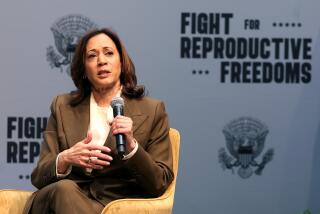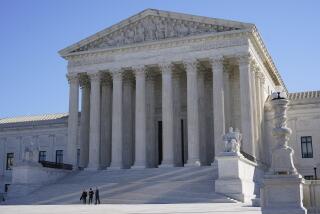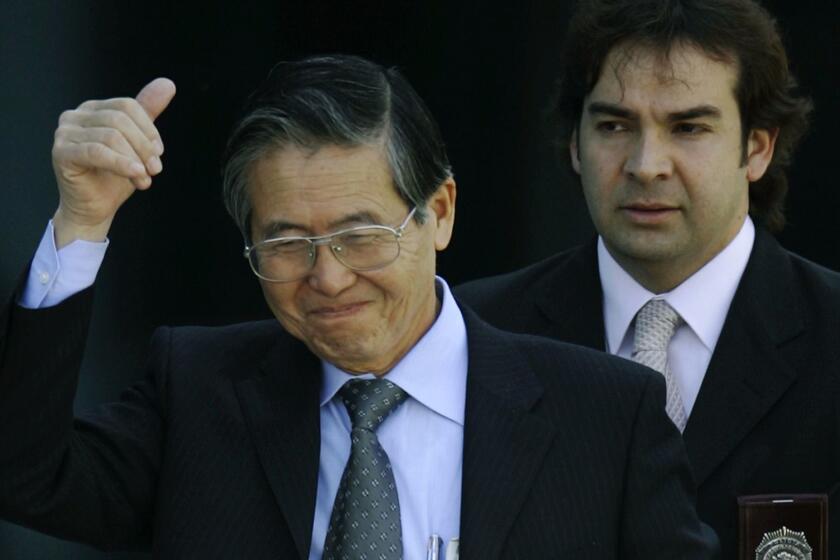Dr. Bernard Nathanson dies at 84; obstetrician championed abortion rights before switching sides
Dr. Bernard Nathanson, an obstetrician who was a leading champion of the abortion rights movement until he switched sides and vaulted to prominence as the narrator of the grisly anti-abortion film âThe Silent Scream,â died Monday at his New York City home. He was 84.
The cause was cancer, said his wife, Christine.
FOR THE RECORD:
Bernard Nathanson: The obituary in the Feb. 23 LATExtra section of Dr. Bernard Nathanson, the former abortion supporter who narrated the controversial anti-abortion film âThe Silent Scream,â said that he left his position at St. Lukeâs Hospital in New York in 1978. He remained with the hospital for some years after that date. â
Nathanson began performing abortions in the 1960s and later headed a major New York clinic where he oversaw 60,000 abortions. In 1969 he joined with feminist Betty Friedan and activist Lawrence Lader in founding the National Assn. for the Repeal of Abortion Laws, now known as NARAL Pro-Choice America, and served as its medical director.
Less than a decade later, however, Nathanson began to publicly profess his unease about the procedure that he estimated he had personally conducted 5,000 times. In 1984, spurred by remarks made by then-President Reagan, he arranged the filming of an abortion in process. The graphic ultrasound that purports to show, according to Nathansonâs narration, âfor the first time ... a child being torn apart, dismembered, disarticulated, crushed and destroyed by the unfeeling steel instruments of the abortionist,â became the basis of âThe Silent Scream.â
FOR THE RECORD:
Nathanson obituary: An obituary in the Feb. 23 LATExtra section of Dr. Bernard Nathanson, the former abortion supporter who narrated the controversial anti-abortion film âThe Silent Scream,â said that he left his position at St. Lukeâs Hospital in New York in 1978. He remained with the hospital for some years after that date.
Reagan endorsed the movie in a speech before 70,000 âmarch for lifeâ activists in Washington in early 1985. Copies were distributed to every member of Congress as well as all nine members of the U.S. Supreme Court.
The 28-minute film took its name from Nathansonâs description of the fetusâ behavior as the abortion commences: âThe childâs mouth is wide open in a silent scream,â he says.
Critics denounced the film as propaganda and âemotional pornographyâ and questioned its authenticity. Some called Nathanson a grandstander, others a traitor. Asked her opinion of her former comrade in arms, Friedan told New York magazine in 1985, âWhittaker Chambers comes to mind.â Chambers was the former Soviet spy who renounced communism in the McCarthy era and testified against State Department official Alger Hiss.
Nathanson was born in New York City on July 31, 1926, the son of a gynecologist. A graduate of Cornell University, he earned a medical degree in 1949 from McGill University in Montreal. While at McGill his girlfriend became pregnant and he sent her to get an illegal abortion. She returned âashen and trembling violentlyâ in a cab with âa pool of clotting blood on the floor,â he wrote in his 1979 book âAborting America.â The relationship ended.
As a medical resident in New York he treated women who had had botched abortions. He had been performing legal, therapeutic abortions for a few years when he met Lader in the late 1960s and was swept up in the abortion rights movement. In 1970 he became director of New Yorkâs Center for Reproductive and Sexual Health, which he often described as âthe largest abortion clinic in the western world.â
In 1972 he left the clinic to become chief of obstetrics at St. Lukeâs Hospital in New York. The emerging technology of ultrasound and significant advances in the care of newborns and treatment of high-risk pregnancies led him to question the morality of abortion. He found it increasingly difficult to view the fetus as anything less than a sentient human being.
In 1974, a year after the Supreme Court established abortion as a fundamental right in Roe vs. Wade, Nathanson wrote in the New England Journal of Medicine that there was âno longer serious doubt in my mind that human life exists within the womb from the very onset of pregnancy.â In 1977 he tried unsuccessfully to stop the abortion of a 33-week-old fetus that had been diagnosed with a lethal form of dwarfism. He stopped performing abortions and left St. Lukeâs the following year.
Reaganâs 1984 comments that the unborn âoften feel pain ⌠that is long and agonizingâ during an abortion spurred a furor that Nathanson sought to address with âThe Silent Scream.â He later made another film, âEclipse of Reason,â about a late-term abortion. He also held faculty positions at Cornell and New York Medical College.
Divorced three times, he is survived by a son, Joseph, of New Jersey, in addition to his fourth wife, Christine.
Maintaining that his flip-flop on abortion was based on reason, not religion, Nathanson often described himself as an atheist Jew. In the 1990s, however, he experienced a spiritual crisis. âI had performed many thousands of abortions on innocent children,â he wrote in his book âThe Hand of God: A Journey From Death to Life by the Abortion Doctor Who Changed His Mindâ (2001) âand I had failed those whom I loved.â In 1996 he converted to Roman Catholicism.
More to Read
Start your day right
Sign up for Essential California for the L.A. Times biggest news, features and recommendations in your inbox six days a week.
You may occasionally receive promotional content from the Los Angeles Times.








